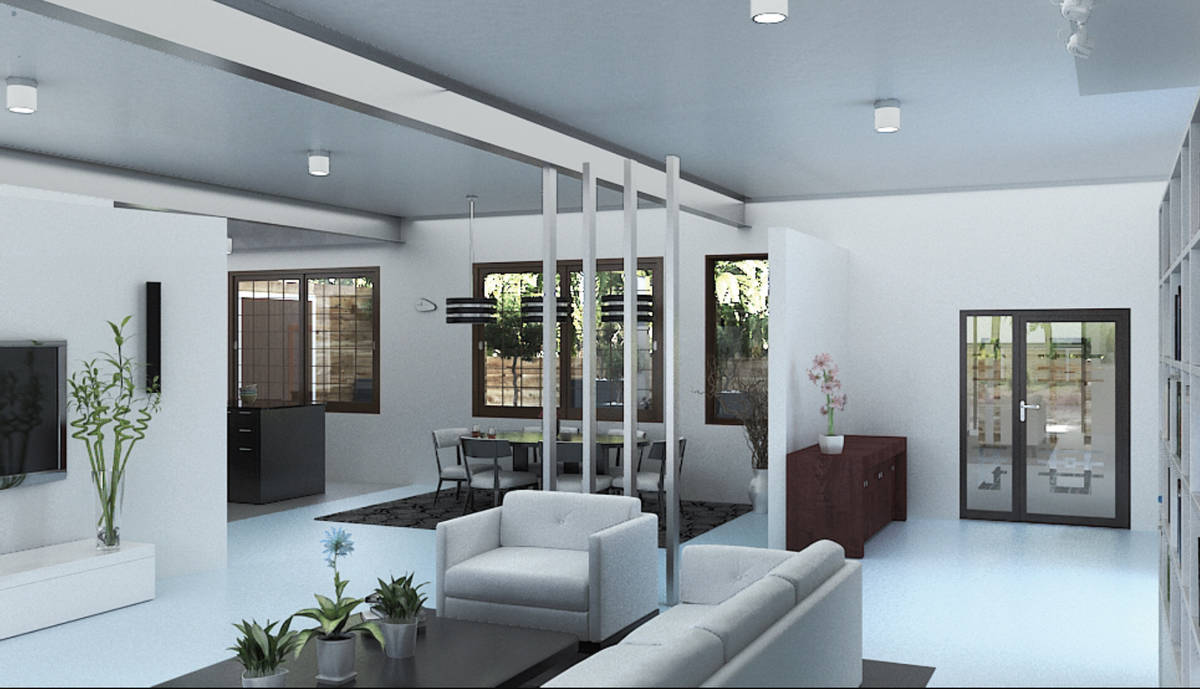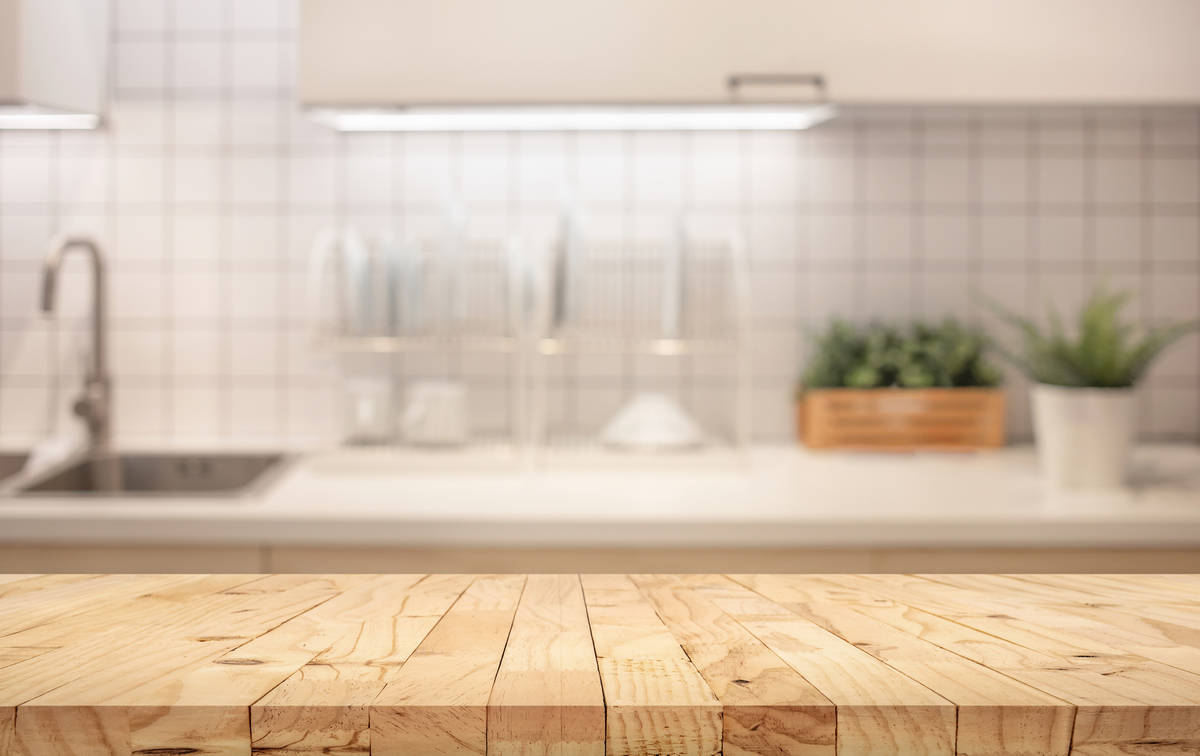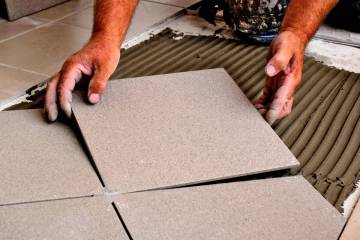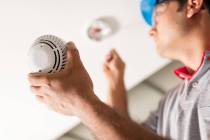Adjustments help older adults age in place
To the uninformed observer stopping by University of Nevada, Las Vegas architecture professor Dak Kopec’s Health in the Built Environment course, the class may look like a lot of fun and games. Students with hula hoops around their waists try to navigate narrow spaces. Others move around the room wearing glasses that produce tremendous glare and compromise their vision.
These aren’t acts of play or self-sabotage. In fact, they’re empathetic attempts for students to understand the experiences of those with certain disabilities.
“We’re blending architecture with the health sciences,” Kopec said. “We know, as people get older, they start to have balance or movement disorders and may add extra weight and there’s some instability. We’re trying to put ourselves in the shoes of someone who has a certain impairment. We can then use that information for person-centered design.”
As we age, simple daily tasks can become more difficult, Kopec said, and adjustments to our home environments may be required. The expert and several other design pros talk about how certain changes in our living spaces can make life easier as we age in place.
Kitchens and lighting
With feelings of isolation because of the COVID-19 pandemic, many homeowners may be itching to entertain as the holidays approach, especially winter residents escaping the cold and wanting to reignite local friendships, Kopec says. In such situations, aging populations should consider the safety of their kitchen.
He recommends making sure devices are in place to remind them a stove burner or hot appliance is on or off. Kopec also encourages seniors to install a mirror behind the stove. That way, when it steams up, they know a dish is boiling. The mirror can even give “more perspective” of what’s going on around the stove and the kitchen.
Lisa Cini, an aging expert and interior designer who specializes in creating spaces for aging adults, likes to “take an inventory” of where pots, pans and dishes are placed in cabinets and on counters. As we age, it’s important to rearrange things so that heavier items are stored in lower compartments, and “replacing drawers with rollers is great design for seniors and for everyone,” she said.
Move the microwave to the countertop and switch to low-range appliances to “increase your range of mobility in your kitchen,” adds Richard Tennill, a partner with Los Angeles-based design firm HBA Los Angeles, which designs senior living communities.
Under-the-cabinet lighting is an easy-to-install staple for seniors, too, Cini says, and Kopec suggests floor lighting wherever possible — in closets and hallways in particular — but to be careful about bright light, whether natural or artificial.
“People that are older typically like to have bright lights in the house, but with that can come some reflection and glare,” Kopec said. “Be careful with countertops and surfaces that may offer a lot of reflection. You can also get a lot of reflection and glare in the glazing of windows.”
Leslie Saul, an East Coast interior designer who has done work for clients in the Southwest, suggests that if someone has glare-producing windows, they should try layering window treatments “with a sheer layer to let light in … without glare” and then adding “a light-blocking layer for privacy at night and for reflecting heat.”
Bathrooms
The bathroom is where the majority of slips and falls occur. To prevent accidents, Cini recommends adding sensors to night lights or buying battery-powered, motion-sensing LED nightlights that can be stuck anywhere. You can paint the wall behind the toilet an accent color so it can be seen in the dark, she added.
For those who are less stable on their feet, she recommends toilet paper holders that can double as a grab bar. Both she and Kopec suggest bidets that install onto the toilet seat for ease of use, plus the lighting they provide at night. And with less mobility, it may be time to change out that bathtub for a walk-in shower with a bench, the experts said.
Flooring
Certain types of flooring can be a danger for aging adults. If area rugs are still in place, make sure they are firmly tacked down, Cini said. Tile may need to be changed out for softer wood or carpet, Kopec added.
Tennill, on the other hand, has found a happy middle ground for those who still prefer tile. Some new products have a “marble look” but have slip-resistant qualities designed into them.
When it comes to floors, Saul added: “Be careful about transitions between flooring materials, such as between wood and tile or wood and carpet. If you can make a color contrast between materials, it will be easier to see and less of a tripping hazard.”
Weighing aesthetics, using technology
Making your home safer doesn’t mean you need to forego aesthetics either. Today’s designers go to great lengths to make sure a home doesn’t appear modified. In fact, Tennill says minimalistic, or modern, design lends itself to safe design for seniors.
“Consider opening up rooms for easier flow by removing area rugs or extra side tables,” he said. “Downsizing the amount of furniture and decor within a room will make the space seem larger and more modern.”
Kopec and Cini have seen tremendous strides in aesthetics for person-centered design. Grab bars, for example, can be recessed into walls, and some designers use metal tubing that looks like racing stripes on walls but is anchored soundly if needed as a grab bar. Some bars are even installed as shelves or vertically as decorative wood integrated into the design.
“An interior designer’s first rule of thumb is there should be nothing in the home that draws attention to somebody’s differing ability,” Kopec added.
Cini also likes to leverage technology. Devices such as Amazon Alexa or Google’s virtual assistant can be valuable tools for reminders and alerts when doors open, close or lock. You can sync them with other technology and use them to change TV channels, turn lights on and off when entering or leaving a room and other functions.
Some phones have earbuds that can act as hearing aids too. Induction loop technology inside certain hearing aids allows the hearing impaired to connect their device to the TV to control volume without distracting others.
Saul recommends her clients get the most out of their cellphones.
“There are some apps available … that can remind you to take medications and can check in with you daily to see if you need anything and can contact relatives, health care professionals, pharmacies, grocery stores,” she added. “That can really help people who live alone be more independent.”






























